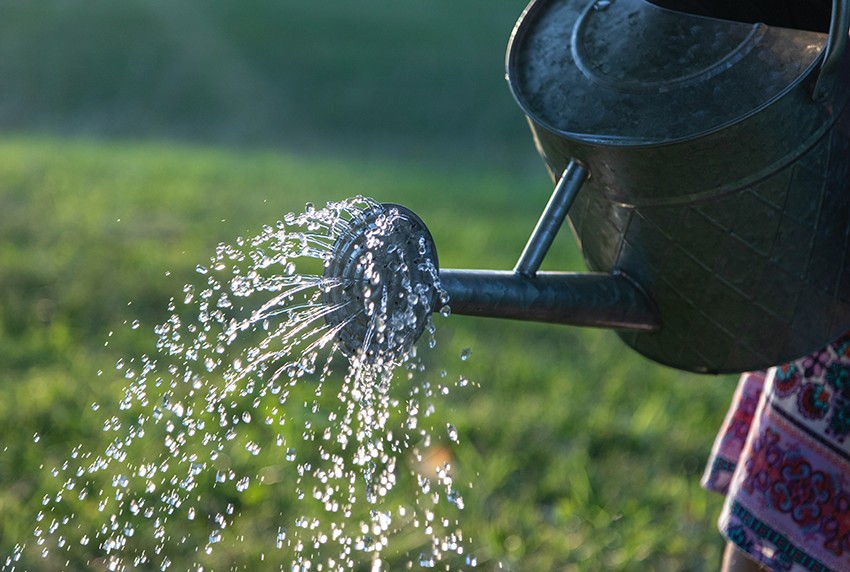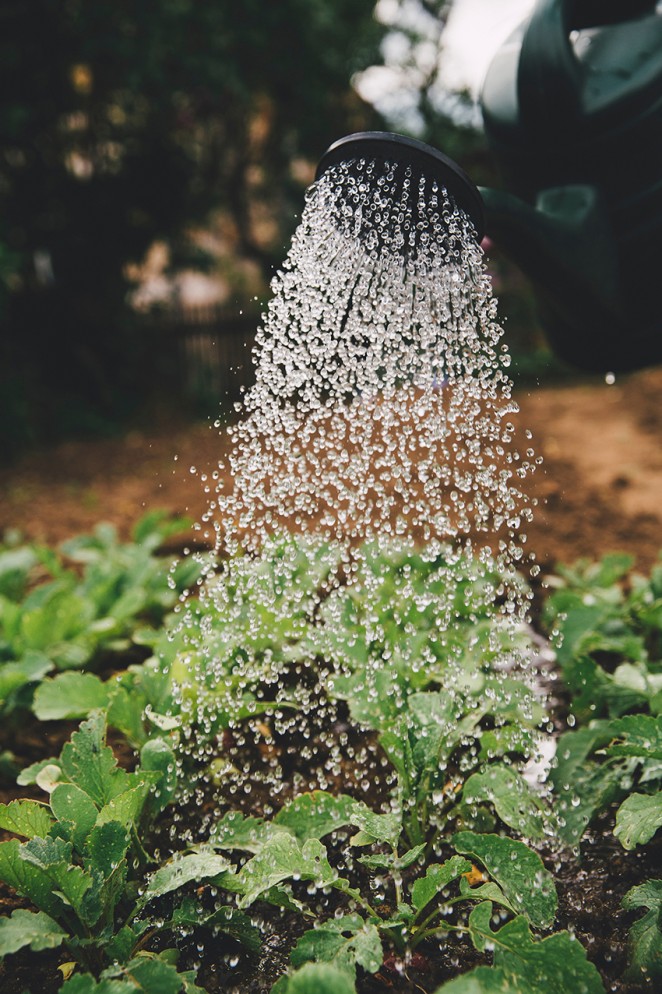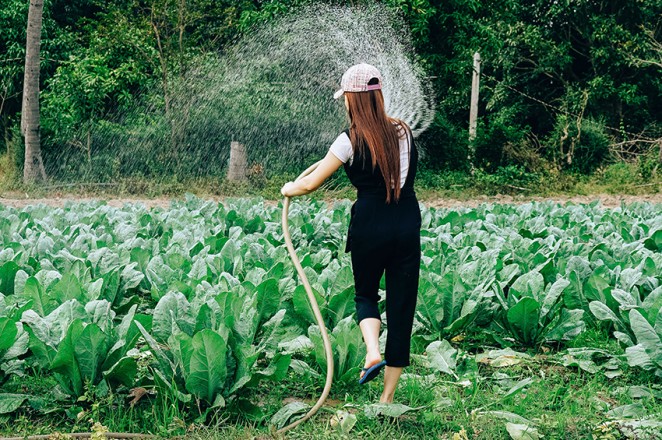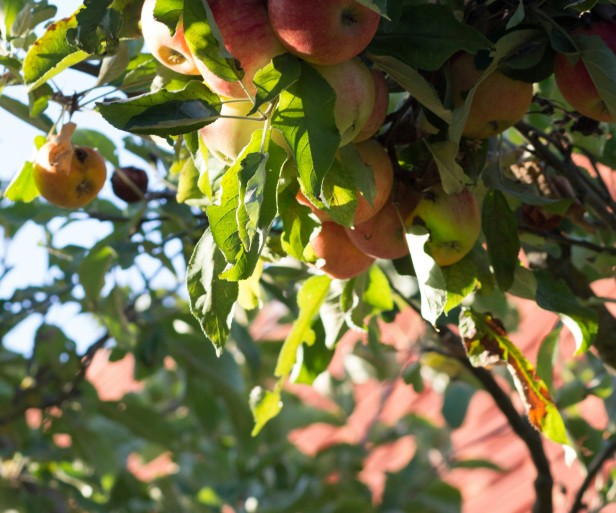Water the garden

The elixir of life is often overlooked when we think about growing veggies.
Water water, there seems to be plenty coming out of the skies this spring yet as we all know suddenly and usually the tap gets turned off for the summer. In other parts of the country watering the garden can be an afterthought, for us living in the rain shadow of the southern alps it can blow for days with the promise of rain only for the front to spit a few drops and then head up the west or east coasts.
An ideal climate would be a couple of nice rainy days a week, better still rainy nights.
This lack of rain might not be so bad if it wasn’t so windy!! The wind just strips our soils of moisture so that we’re always in a moisture deficit.
Ideally we are going to water our gardens from above imitating nature. Walking around with your garden hose can become time consuming. A simple oscillating sprinkler that goes back and forth is perfect and relatively inexpensive. Pop a timer on it and you don’t have to remember when to turn it on and more importantly when to turn off.
As our garden gets bigger so do your watering needs. Efficiency of delivery becomes more important as more and more of our homes are metered.
I’ve tried lots of leaky hose systems over the years with varying success. Changing to an overhead system I experienced major improvements in my growing of veggies. By overhead I mean a series of sprinklers attached to some Waratahs banged in the ground placed in the corners to ensure good coverage. Simple and efficient at getting the job done. Simple it may be and yes very efficient at getting the water out, but I’m still watering my pathways needlessly. A more efficient delivery can be sprinklers for each bed. As crops get bigger these can be less efficient at delivery as the plants get in the way..
I haven’t found the perfect system overhead delivery system but I’m loving this one... Let me know if you have found it.
In my tunnel house I have 2 systems in play. The overhead sprinklers run for most of the year. I grow a lot of tomatoes and they don’t like too much water from above as they move into fruit ripening. Overhead watering can encourage humid disease loving conditions. As the summer season goes along I switch to inline drippers on the beds. Giving the tunnel house an overhead water once a week.
Top water tips
1. A long deep water every other day is more beneficial than daily short watering. Your plants roots grow where there’s water. Shallow watering encourages shallow roots. This leads to less resilient plants in times of stress or your water system breaking down. So watering for longer to get water and roots to go deeper.
2. Mulch (straw/leaves/wood chips...) as well as feeding your biology and plants in the soil etc Mulch stops and slows the evaporation of water from your soil. It also prevents soil compaction that rainfall and your sprinkler system causes on the soil surface.
3. The more organic matter in our soil the greater the water holding capacity it has. Generally we all have sandy and silty soils, that have very poor water holding capacity. So we need to really focus on getting our organic matter levels up. Think regular applications of compost, vermicast, leaf mould and mulch. Products like biochar increase the water holding capacity of the soil too.
4. When do we water? Watering in the morning, gives plants a chance to get through a hot or windy day with less stress.
5. How long do I water for? We mentioned longer is better. So think 30minutes rather than 10 minutes. Get in your garden after you’ve watered and dig a hole. How deep did your water go. 2cm or 10cm? 10 plus is preferable. Dig a few holes you might find the sprinkler system delivers more water to some areas of the garden. You could then plant accordingly with water hungrier plants in those areas. Eg pumpkins, zucchini’s, tomatoes, celery, cucumber and corn...
6. Capturing rainfall. Consider wood chipped pathways 20-30cm deep to capture and soak water into your landscape.
7. Planting comfrey down stream from your veggie garden can be used to capture any soluble nutrients and excess watering that might occur with rain events.
8. Consider capturing and storing your roof water. There are simple tap into downpipe systems available.
9. On town water? Chlorine is not the gardeners friend. Putting water in barrels and totes is a way of allowing the chlorine to gas off. Agitating the water with a cheap fish tank aerator will speed up the process.
10.Ever noticed your plants are glowing after a rainfall. Rain is best capturing nitrogen on its way down giving our plants a feed.









